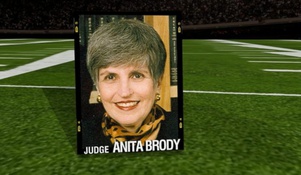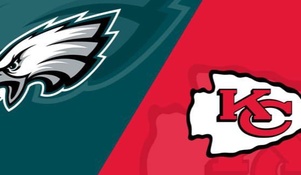Getting outraged over the NFL Pension Plan? Do something about it!

“Getting outraged about the same sins of the past over and over again does no one any good. I'm saving my outrage for the next thing that the NFL does wrong, the thing we may be able to do something about. It's time to move on. The NFL actually sounds more or less ready to make some progress. Maybe the conversation should join it.” Quote from Mike Tanier, a writer for Bleacher Report from his article “The NFL was Wrong, But it’s Time to Move On.”
I have been a vocal critic of the NFL, but I have to agree with most of what Mike Tanier said in his article. He responded to the NFL concussion news from the NY Times article not with anger, scorn or moral righteousness, but with a simple three-word question: So what now?
He also asked five other important questions: "What do we do about this problem? How do we move forward and make things right? Can we use this information to make football safer? Save lives? Improve the quality of life for former players?"
That last question is the one that I would like the NFL and NFLPA to address. I have offered my advice on some of the ways to improve our quality of life and it always comes back to the number one thing that former players say: Increase our Pensions!
Lifetime medical benefits comes in a close second, but not even the current players have that benefit - although they do have some nice perks. Vested players, receive (5) free years of medical benefits after they retire, a Health Reimbursement account that can help them pay future premiums. Players can't amass more $350,000 in their HR account. They also negotiated the right to stay on the NFL’s Group Health Insurance plan after retirement.
I’m not saying the NFL and NFLPA haven’t done some good things for former players. They’ve provided some modest increases to our pension plan and they've established the 88 Plan, Long Term Care Insurance, the TRUST, and the Player Care Foundation and P.A.T. (Player Assistance Trust) fund to help players in dire need. They also have a host of other services under the Former Player Life Improvement Plan and the NFL Legends Program.
The problem is, a lot of players don’t need these services and don’t qualify for them because they're not in dire need, or don't have any major medical issues. So the the best way the NFL and NFLPA can help most former players is through the pension plan. The monthly checks that players receive can be spent on the things that we think will enhance our quality of life. Programs, services, surveys, health screenings, seminars, hotlines, transition programs and counseling are all very nice, but they don’t really help us pay the bills, or pay for other necessities. Let's face it, Cash is King.
Unfortunately, there is also a problem with the way current benefits are provided.
The money that the NFL and the NFLPA distribute via the Collective Bargaining Agreement go toward current player salaries and benefits. Those two parties also decide how much will be set aside for former player benefits. There is a clearly defined amount of money in the pot and therefore any money that comes out of it for former player benefits will, in turn, reduce the amount of money available to the current players.
See the conundrum? The way benefits are funded creates a naturally antagonist relationship between active and retired players. As much as the NFLPA wants to say we are One Team, it's obvious to most former players that we are the waterboys to the wealthy. In order for former players to get what they want (and need) there has to be a redistribution of wealth. But, before you call me a socialist, or communist, don’t forget that the scales have been dramatically tipped in favor of active player salaries and benefits for the past 23 years. It all started with the 1993 CBA, which finally gave players free agency and opened the floodgates on player salaries, bonuses, incentives and benefits. But remember, none of that would have happened without the blood, sweat and tears of the older generation of players that formed the union, went on strike, got blackballed, and eventually sued the NFL and won the legal battles necessary to get better wages and benefits.
The revenues generated by the NFL and the NFLPA have continued to grow exponentially and other than the 2010 owner lockout, it has led to relatively peaceful labor negotiations. The NFLPA and the League have extended the 1993 CBA six times. It’s been 29 years since the last player strike!
I’m not sure if the active players really understand how good they have it…….or more importantly, why they have it so good.
Right now, there is an ongoing national debate about the growing income gap between the 1 percenters and the 99 percenters. It takes an average annual income of approximately $425,000 to make the 1% club. In 2016 the minimum wage for a first year player will be $450,000. Therefore, almost all current players are in the 1% of the highest wage earners in the U.S. You can see how much you have to earn to be in the 1 percent in each state, here.
It keeps on getting better for current players. Next season a mere 1,700 players will earn 5 BILLION in salaries and bonuses. If that amount were divided equally (socialism at its finest) each player would make about 3 million annually. Thankfully, it doesn’t work that way. It’s still a system of rewarding players based on performance. Nonetheless, the players at the bottom of the NFL wage ladder are still doing better than 99% of the population – and that includes a vast majority of the players that played before 1993 during a time when salaries and benefits were lower than a snake's ankles.
Last year, the average player salary was $2,100,000 and the median salary was $860,000. That does not include what players can make through personal endorsements, NFL Players Inc. (the marketing arm of the NFLPA), or the NFLPA Group Licensing Program. Many players will also have guaranteed money coming into their bank accounts even after they retire.
Besides the Pension Plan, the post 1993 players also have two other very generous "retirement type" benefits: The Second Career Savings Plan and the Annuity Plan.
Former players are concerned that, instead of putting the money from those retirement type plans into the NFL Pension plan to benefit ALL players, the CBA’s carved out these special retirement funds that only benefit the post-1993 players. The Second Career savings plan has an average player balance of $210,000 and the Annuity has an average player balance of $250,000. You can read about these other retirement type benefits here. The Annuity plan has over 1 billion in assets and the Second Career Savings plan has over 1.6 billion in assets for a total of 2.6 billion. That’s almost one billion more than the NFL Pension Plan, which currently has 1.8 billion in assets.
So what can we do to create a more equitable distribution of benefits to former players?
First and foremeost - more high profile players need to speak out and let the NFL and the NFLPA know how they feel. If you would like to post an article here at NFL Retired Players United, just send me an email and show me a draft of your comments. I have already posted comments from several prominent former players who have been involved with the NFLPA’s Former Player National Steering Committee. You can read Butch Byrd and and Jim McFarland's comments here and here.
During the run-up to the 2011 CBA, 80 Hall of Famers signed a letter asking the current players to institute a Rookie Salary Scale and use the money saved to increase pre-1993 player pensions. Low and behold, the first Rookie wage scale was finally implemented with savings going to the Legacy benefit. Roger Goodell said the Legacy benefit was an important step. He's was right. It was one small step for some men...... and now we need one giant leap for all former players that played in the NFL up until 2011. You heard me right!
In the past, I have lobbied exclusively for pre-1993 player pension increases, but now that the NFL is projecting 25 billion in revenues by 2027, I would recommend that the NFL and NFLPA increase all pre-2012 former player pensions and establish a benchmark of at least $500 per credited season. That would require a massive increase in the amount of funding needed to satisfy the liabilities of the plan, but as we have seen, the NFL and NFLPA have had no problems increasing the other retirement type benefits (Annuity and Second Career Savings plan) to amounts that are almost one billion more than the NFL Pension Plan! Both sides have shown that it can be done, so now it’s just a matter of finding the will to do it. As with all increases to former player benefits - the squeeky wheel will get the oil and unless there is a concerted effort among former players, this won't happen.
The big question is: Would the active players support this type of increase? I hope so, because they will continue to do very well under the current CBA - and all future CBA's for that matter. Under the current agreement, pensions have already increased to $560 per credited season, and in 2015 they increased to $660. In 2018 they will increase again to $760 per credited season. In the meantime, most former players are still stuck between $250 and $470 per credited season - and they need 4 seasons to get vested, whereas current players only need three seasons. I should note that the $250 per credited season goes up to approximately $363 when the Legacy Benefit is factored in for all players vested before 1993. The NFLPA also used $35 million from the "Joint Contribution" fund to increase the pensions of players that had credited seasons during the period 1993-1996 to bring them more in line with the former players that received the Legacy benefit.
I should also point out that in addition to the pension increases, all of the other benefits for active players will continue to increase every few years during the course of the current CBA. That includes Severance pay, the Annuity Plan, Second Career Savings Plan, Tuition Assistance, Minimum salaries, Health Reimbursement Account etc., etc. etc.
Most importantly, player salaries will continue to grow, because the salary cap will continue to grow. When the Salary Cap was first instituted in 1994, teams had $34.6 million to spend on players.
Over the past 13 years, the Salary Cap has more than doubled – along with player salaries: 2016: $155.27 million; 2015: $143.28 million; 2014: $133 million; 2013: $123 million; 2012: $120.6 million; 2011: $120 million; 2010: Uncapped; 2009: $123 million; 2008: $116 million; 2007: $109 million; 2006: $102 million; 2005: $85.5 million; 2004: $80.58 million; 2003: $75 million.
In addition to Hall of Fame players continuing their call for increases to the pension plan, their wives have also joined the battle for better benefits. They wrote a letter to the NFL Commissioner and subsequently met with NFL representatives on December 8, 2015. They are scheduled to meet with them again very soon.
As Mike Tanier said in his article "The NFL actually sounds more or less ready to make some progress. Maybe the conversation should join it.”
Like Mike, I think the NFL is ready to make progress and help improve the quality of life for former players. It's time for all former players (and their wives) to join in this conversation.
Mike also said "I'm saving my outrage for the next thing that the NFL does wrong, the thing we may be able to do something about."
This is an issue that we can do something about!






